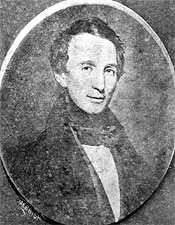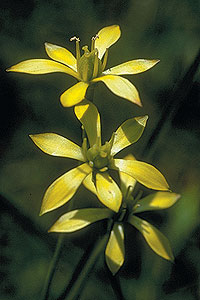History:
Plants named for intrepid botanists
“I soon learned that rare and beautiful plants can only be found in places that are difficult of access…Often one has to shove one's self through or wriggle under briars, with awkward results to clothing and many and deep cuts and scratches…Wading, usually barelegged, through countless rattlesnake-infested swamps add immensely to the interest of the days work.” -- Mary Gibson Henry
Although the stereotypical botanist sits in a meadow and smells the flowers, the real botanist is an adventurer, a risk-taker, and an intellectual, all at the same time. Florida has lured many famous naturalists, from John James Audubon to William Bartram to Archie Carr. A few had plants and animals named after them. Here is a selection of some of the more famous:
Torreya tree
Dr. John Torrey (1796-1873) was a medical doctor who taught chemistry, geology, and natural history at West Point and Princeton University. He wrote or contributed to several ground-breaking botanical books. The Florida torreya tree is one of several in the genus Torreya, but it's the only one found in North America. A mountain in Colorado was named for him, and he climbed it for the first time at the age of 76. There's also a tree called the Torrey pine, one of the rarest native pines in the United States, which grows (among other places) in Torrey Pines State Reserve in California. The Florida torreya tree is one of the rarest plants in the ARROW region, and it is found in Torreya State Park north of Bristol.
 Portrait of Hardy Bryan Croom Photo courtesy Florida Photographic Archives. |
Chapman's rhododendron
Dr. Alvan Wentworth Chapman (1806-1899) came to Quincy from Massachusetts around 1835 to set up a medical practice. He later moved to Marianna, then to Rocky Comfort, and finally to Apalachicola, where he was living when his monumental “Flora of the Southern United States” was published in 1860. He had no formal botanical education, but his name is part of history because of his contributions to botany. Besides practicing medicine, he also made a living as a tax collector and a customs agent.
Ashe's magnolia
William Willard Ashe (1872-1932) has been called a “congenital naturalist” because he was so talented at identifying plants. Ashe was a forester. He worked for the U.S. Forest Service for 27 years, and he devoted his spare time to botany. He was a tireless collector who had 20,000 specimens by the time he died. He named more than 500 plant species (some of which have since been renamed), including two after his wife Margaret (Cratagus margaretta and Quercus margaretta).
 This endangered plant, Harper's beauty, is in the lily family. It is almost impossible to identify except when it's blooming. (photo by Eleanor Dietrich) |
Mrs. Henry's spiderlily
Mary Gibson Henry (1884-1967) was a fearless botanist and a lady from Philadelphia. Once her children had fledged, she set out with a chauffeur and a car outfitted with what she called an “attic,” a desk, a bookcase, and a compartment designed for the plants she was to collect. She covered the Coastal Plain, the Piedmont Plateau, and the Appalachian Mountains, where she and her daughter were held up by three armed men. She wrote, “It all took place so quickly we felt as though we were at the movies. I had often wondered how it would feel to be held up and really it was not so bad at all.” She continued westward into the Ozarks and the Rocky Mountains, from New Mexico to British Columbia. She was an avid collector of and made many field notes about the genus Hymenocallis -- to which her namesake plant, Hymenocallis henryae, belongs -- as “like great exotic butterflies, snow-white and marvelously fragrant, alas that I must call them rare!” One of her most notable discoveries was Lilium iridollae, which she studied in the wild and ultimately published as a new species.
Godfrey's butterwort and Godfrey's spiderlily
Robert K. Godfrey (1911-2000) was famous for his colorful language as well as for his botanical expertise. He published several scholarly botanical works, including a monumental two-volume work on aquatic plants. The herbarium at Florida State University, where he was curator from 1954 to 1973, is named after him.
Sources:
Fishman, G. 2000. Journeys through paradise: pioneering naturalists in
the southeast. University Press of Florida, Gainesville.
Henry, M.G. 1950. Mary Gibson Henry: an autobiography. Herbertia 6:
8-28.
Smith, Gerald. 2006. personal communication to the ARROW project manager.
Note: The content of the website has not been updated since 2005. The site remains online for it's value as legacy content and is unlikely to be updated.